Sensitivity Enhancement of Fault Detection Utilizing Feedback Compensation for Time-Delay Signature of Chaotic Laser
Abstract
1. Introduction
2. Principle and Numerical Model
2.1. Principle
2.2. Simulation Model
2.3. Bifurcation Diagram
3. Simulation Results
3.1. Impact of Compensation Parameters
3.2. Effect of Pump Current
4. Discussion
5. Conclusions
Author Contributions
Funding
Institutional Review Board Statement
Informed Consent Statement
Data Availability Statement
Conflicts of Interest
References
- Agrawal, G.P. Fiber-Optic Communication Systems; John Wiley & Sons: Hoboken, NJ, USA, 2021. [Google Scholar]
- Ali, T.A.; Ameen, J.J.H. Study of Fault Detection Techniques for Optical Fibers. ZANCO J. Pure Appl. Sci. 2019, 31, 143–149. [Google Scholar]
- Keiser, G. FTTX Concepts and Applications; John Wiley & Sons: Hoboken, NJ, USA, 2006. [Google Scholar]
- Hutcheson, L. FTTx: Current Status and the Future. IEEE Commun. Mag. 2008, 46, 90–95. [Google Scholar] [CrossRef]
- Effenberger, F.; Kramer, G.; Li, R.D.; Oron, M.; Pfeiffer, T.; Germany, A.-L. An Introduction to PON Technologies. IEEE Commun. Mag. 2007, 3, S17–S25. [Google Scholar] [CrossRef]
- Caviglia, F.; Di Biase, V.C.; Gnazzo, A. Optical Maintenance in PONs. Opt. Fiber Technol. 1999, 5, 349–362. [Google Scholar] [CrossRef]
- Yüksel, K.; Wuilpart, M.; Moeyaert, V.; Mégret, P. Novel Monitoring Technique for Passive Optical Networks Based on Optical Frequency Domain Reflectometry and Fiber Bragg Gratings. J. Opt. Commun. Netw. 2010, 2, 463. [Google Scholar] [CrossRef]
- Yeh, C.-H.; Chi, S. Fiber-fault monitoring technique for passive optical networks based on fiber Bragg gratings and semiconductor optical amplifier. Opt. Commun. 2006, 257, 306–310. [Google Scholar] [CrossRef]
- Zhang, X.; Guo, H.; Jia, X.; Liao, Q. Optimal Matching Approach for Cascaded Encoder in Remote Coding Scheme-based Passive Optical Network Monitoring System. Curr. Opt. Photonics 2018, 2, 407–412. [Google Scholar] [CrossRef]
- Esmail, M.A.; Fathallah, H. Physical Layer Monitoring Techniques for TDM-Passive Optical Networks: A Survey. IEEE Commun. Surv. Tutor. 2013, 15, 943–958. [Google Scholar] [CrossRef]
- Honda, N. In-Service Line Monitoring for Passive Optical Networks. In Optical Fiber Communications and Devices; Yasin, M., Ed.; InTech: London, UK, 2012; ISBN 978-953-307-954-7. [Google Scholar][Green Version]
- ITU-T G.652 (08/2024); Transmission Systems and Media, Digital Systems and Networks, Transmission Media and Optical Systems Characteristics—Optical Fibre Cables, Characteristics of a Single-Mode Optical Fibre and Cable. International Telecommunication Union: New York, NY, USA, 2024.[Green Version]
- Li, X.; Zhang, M.; Guo, H.; Shi, Z.; Guo, Y.; Zhao, T.; Wang, A. Parameter Optimization for Modulation-Enhanced External Cavity Resonant Frequency in Fiber Fault Detection. Photonics 2023, 10, 822. [Google Scholar] [CrossRef]
- Zhao, T.; Han, H.; Zhang, J.; Liu, X.; Chang, X.; Wang, A.; Wang, Y. Precise Fault Location in TDM-PON by Utilizing Chaotic Laser Subject to Optical Feedback. IEEE Photonics J. 2015, 7, 6803909. [Google Scholar] [CrossRef]
- Zhao, T.; Shen, Z.-R.; Xie, W.-L.; Guo, Y.-Q.; Wang, A.-B.; Wang, Y.-C. Sensitivity to external optical feedback of circular-side hexagonal resonator microcavity laser*. Chin. Phys. B 2021, 30, 120513. [Google Scholar] [CrossRef]
- Lang, R.; Kobayashi, K. External optical feedback effects on semiconductor injection laser properties. IEEE J. Quantum Electron. 1980, 16, 347–355. [Google Scholar] [CrossRef]
- Salau, T.A.O.; Ajide, O.O. Runge-Kutta Schemes Coefficients Simulation for Comparison and Visual Effects. Engineering 2013, 5, 530–536. [Google Scholar] [CrossRef]
- Wang, A.; Wang, B.; Li, L.; Wang, Y.; Shore, K.A. Optical Heterodyne Generation of High-Dimensional and Broadband White Chaos. IEEE J. Select. Top. Quantum Electron. 2015, 21, 531–540. [Google Scholar] [CrossRef]
- Helms, J.; Petermann, K. A Simple Analytic Expression for the Stable Operation Range of Laser Diodes with Optical Feedback. IEEE J. Quantum Electron. 1990, 16, 347–355. [Google Scholar] [CrossRef]
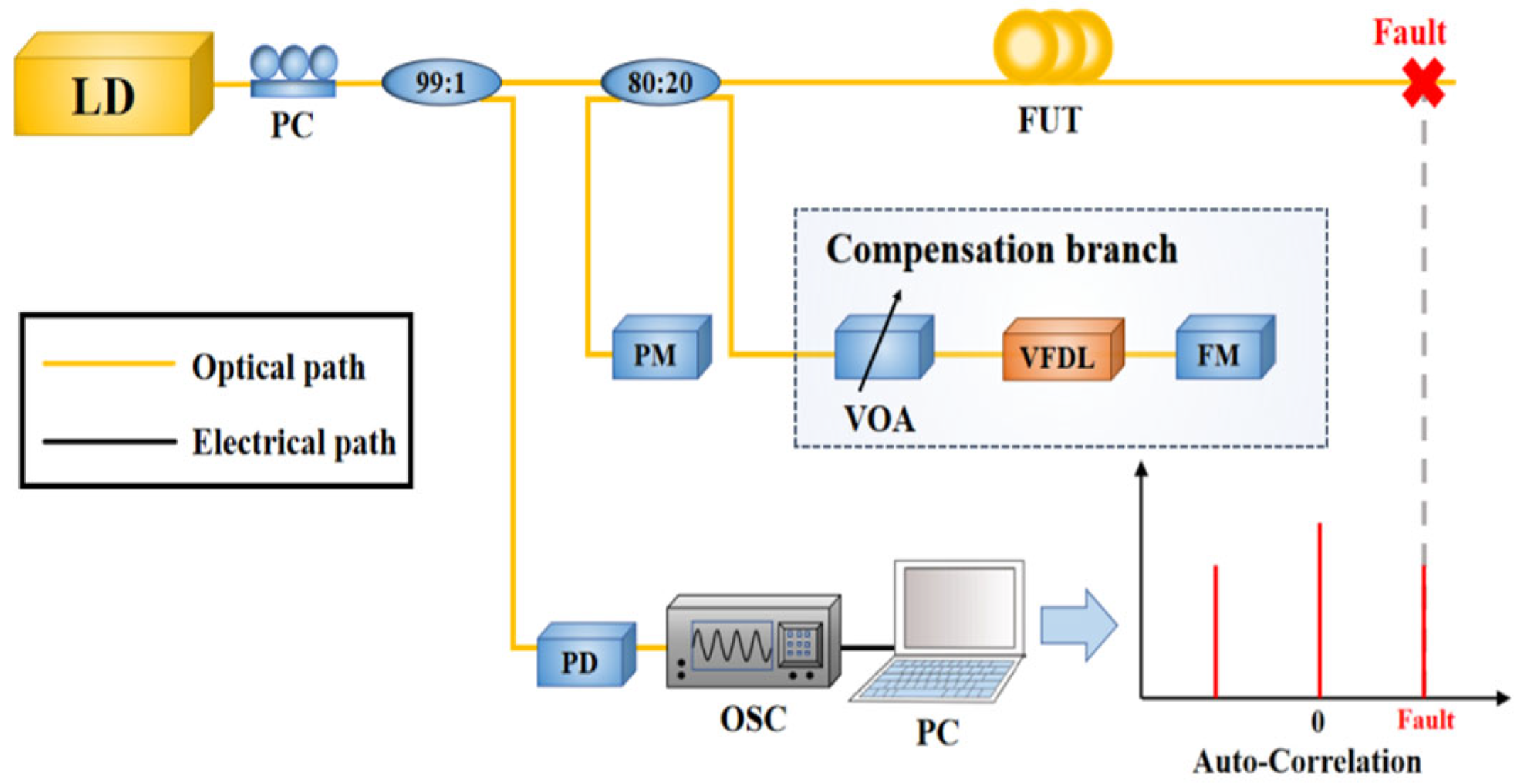
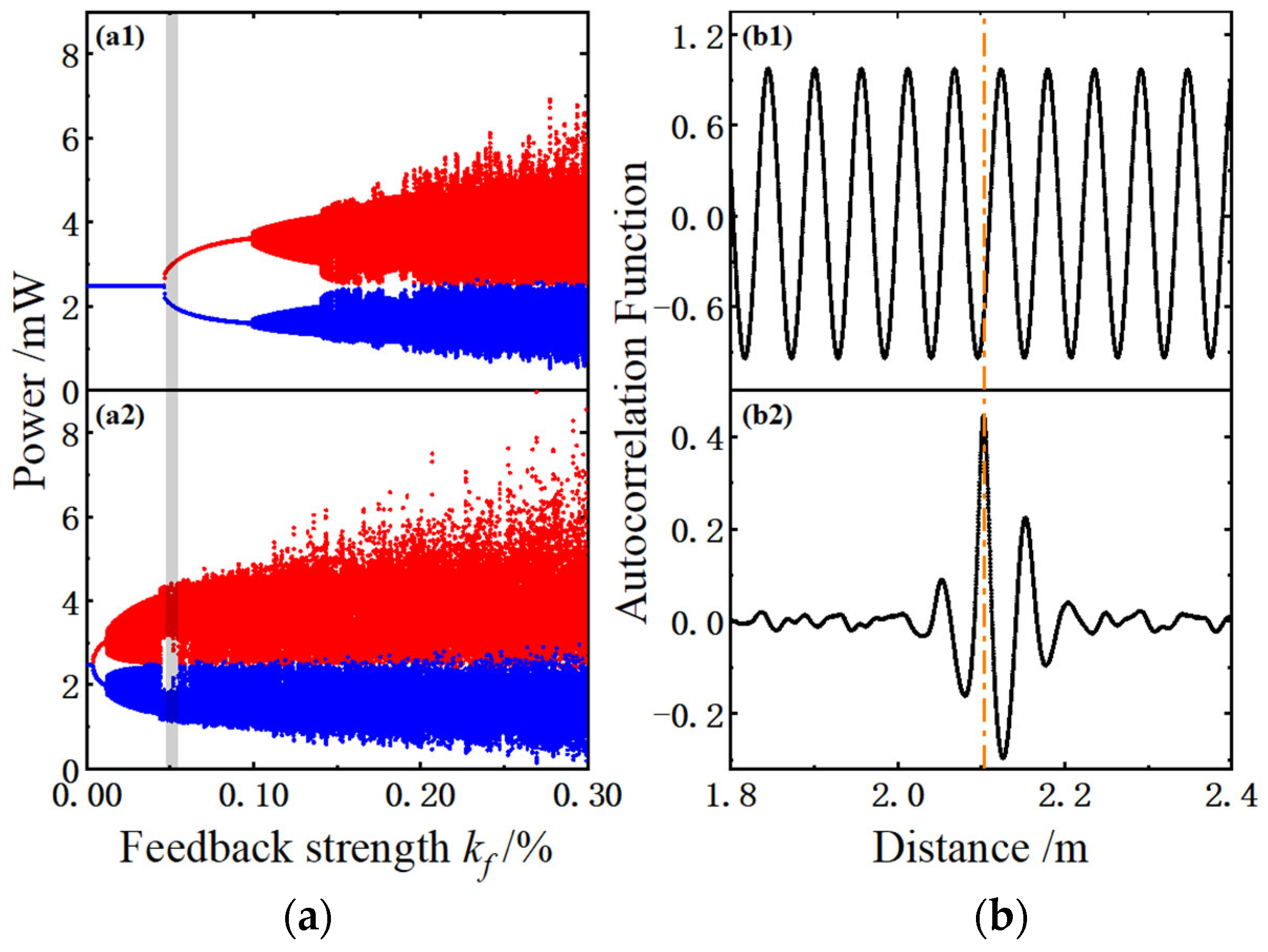


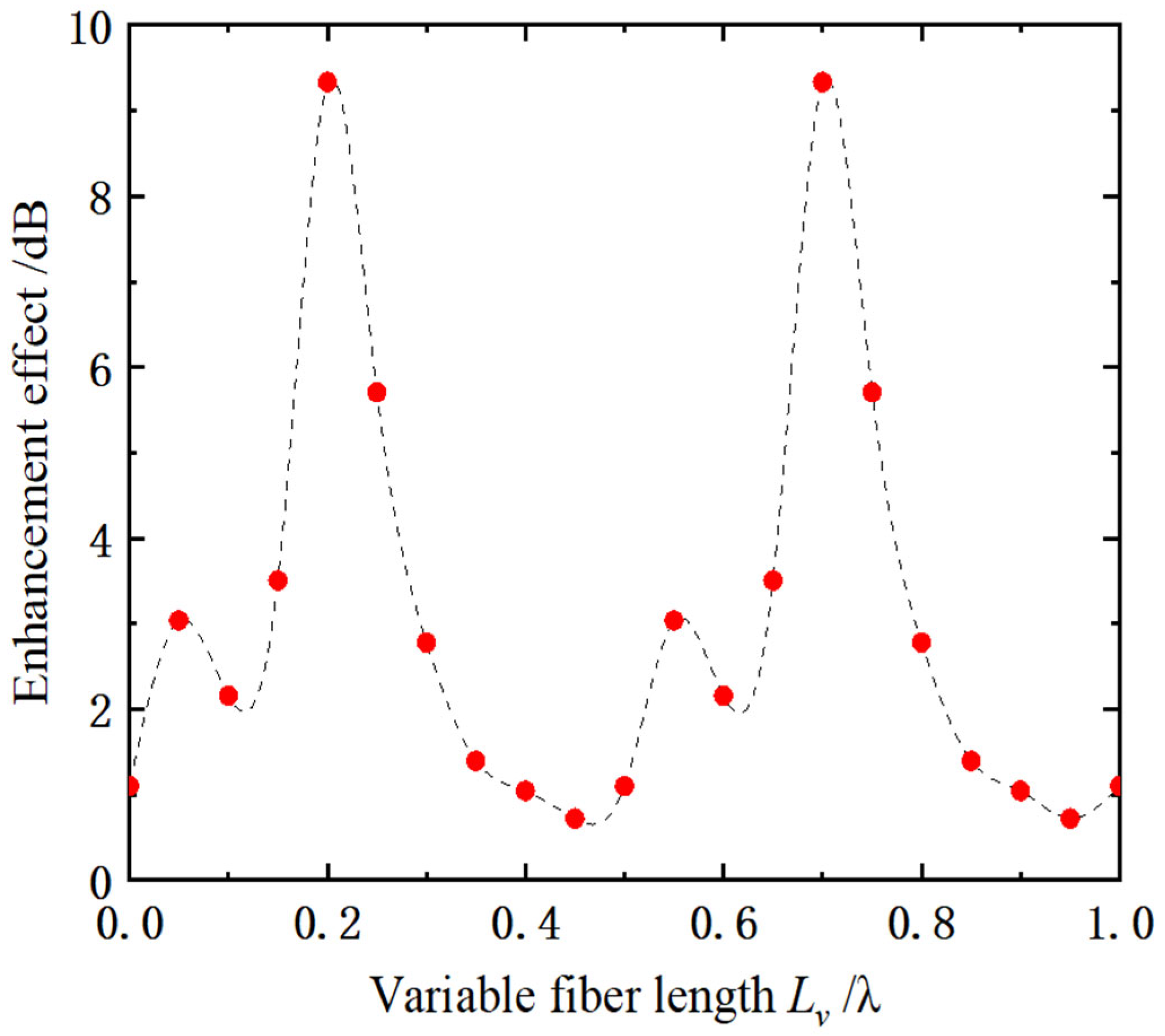
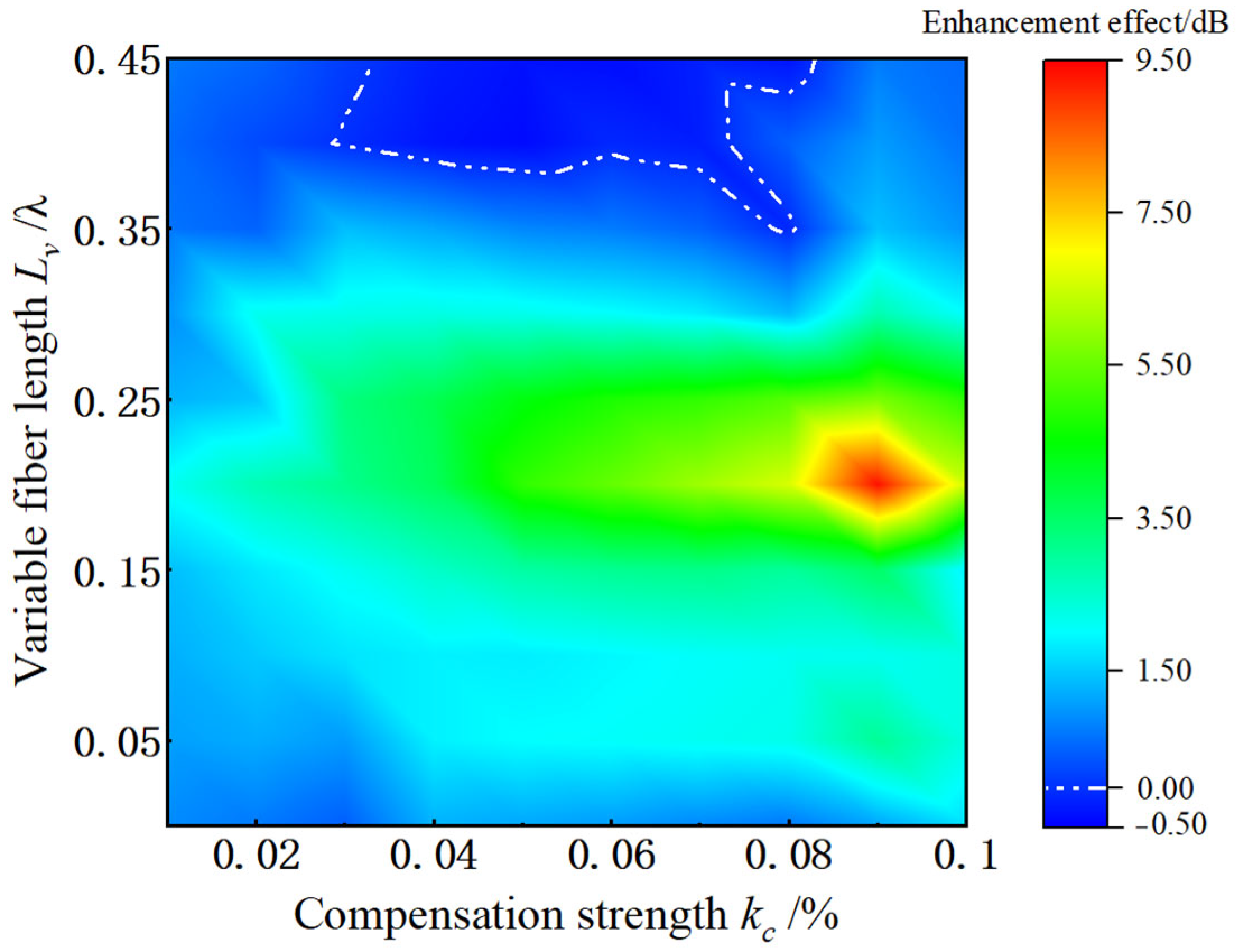
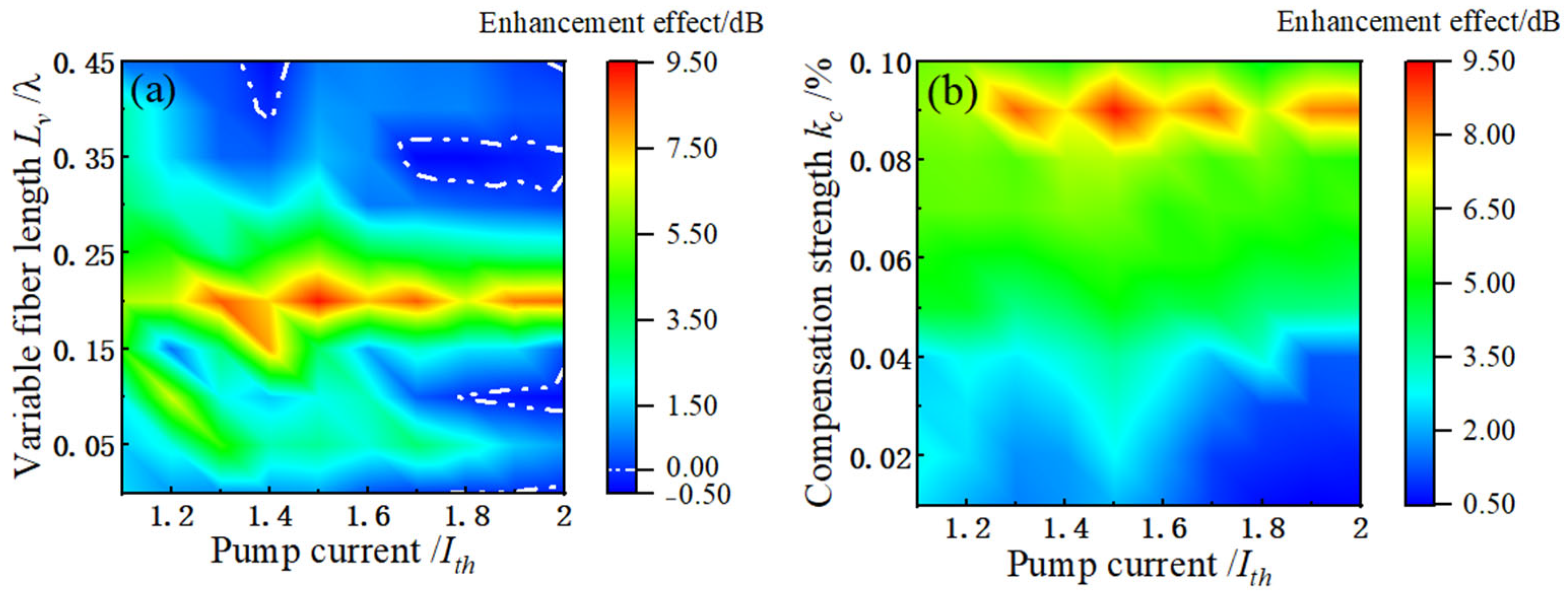
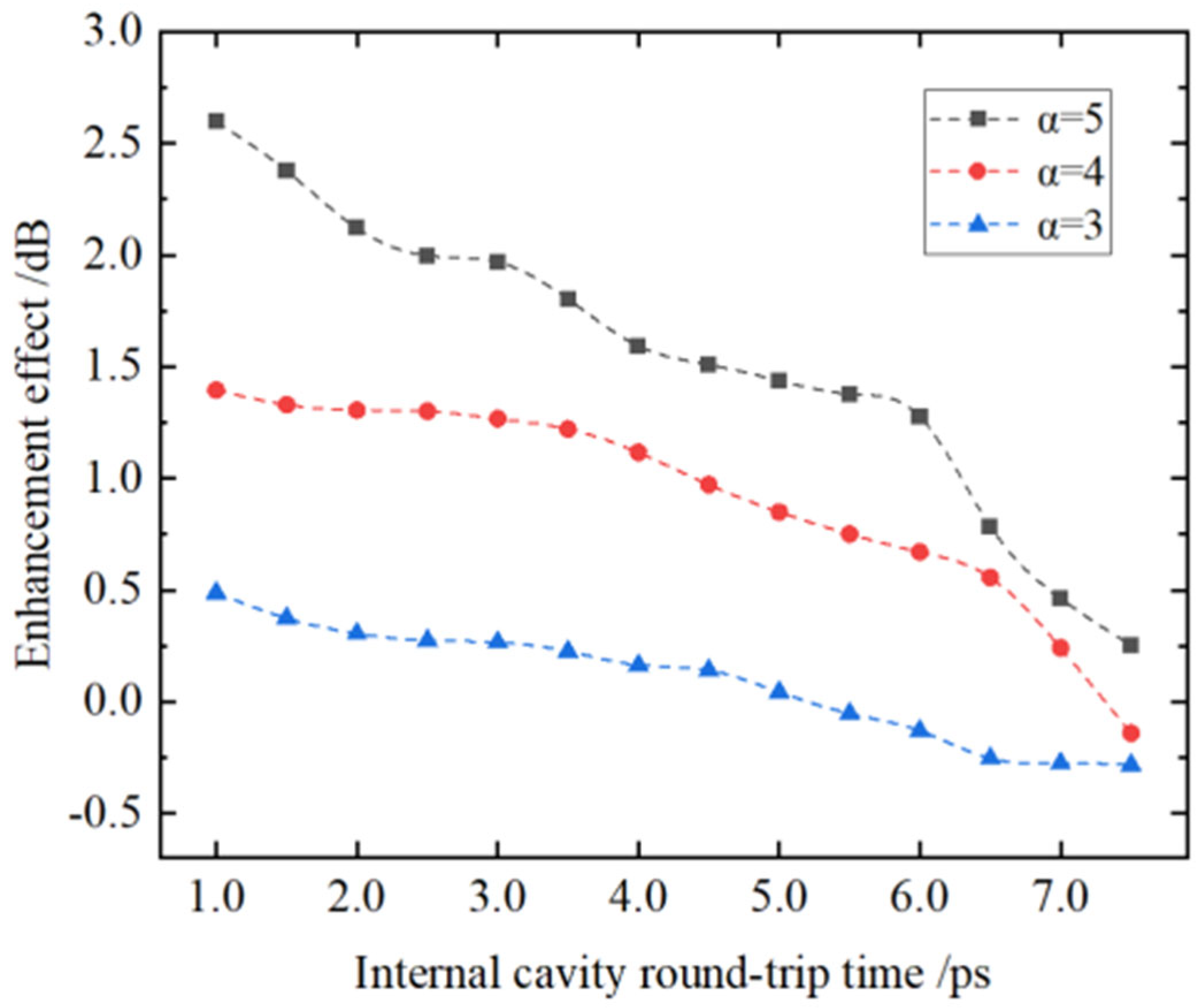
Disclaimer/Publisher’s Note: The statements, opinions and data contained in all publications are solely those of the individual author(s) and contributor(s) and not of MDPI and/or the editor(s). MDPI and/or the editor(s) disclaim responsibility for any injury to people or property resulting from any ideas, methods, instructions or products referred to in the content. |
© 2025 by the authors. Licensee MDPI, Basel, Switzerland. This article is an open access article distributed under the terms and conditions of the Creative Commons Attribution (CC BY) license (https://creativecommons.org/licenses/by/4.0/).
Share and Cite
Guo, H.; Liu, H.; Zhang, M.; Guo, X.; Guo, Y.; Han, H.; Zhao, T. Sensitivity Enhancement of Fault Detection Utilizing Feedback Compensation for Time-Delay Signature of Chaotic Laser. Photonics 2025, 12, 641. https://doi.org/10.3390/photonics12070641
Guo H, Liu H, Zhang M, Guo X, Guo Y, Han H, Zhao T. Sensitivity Enhancement of Fault Detection Utilizing Feedback Compensation for Time-Delay Signature of Chaotic Laser. Photonics. 2025; 12(7):641. https://doi.org/10.3390/photonics12070641
Chicago/Turabian StyleGuo, Haoran, Hui Liu, Min Zhang, Xiaomin Guo, Yuanyuan Guo, Hong Han, and Tong Zhao. 2025. "Sensitivity Enhancement of Fault Detection Utilizing Feedback Compensation for Time-Delay Signature of Chaotic Laser" Photonics 12, no. 7: 641. https://doi.org/10.3390/photonics12070641
APA StyleGuo, H., Liu, H., Zhang, M., Guo, X., Guo, Y., Han, H., & Zhao, T. (2025). Sensitivity Enhancement of Fault Detection Utilizing Feedback Compensation for Time-Delay Signature of Chaotic Laser. Photonics, 12(7), 641. https://doi.org/10.3390/photonics12070641






